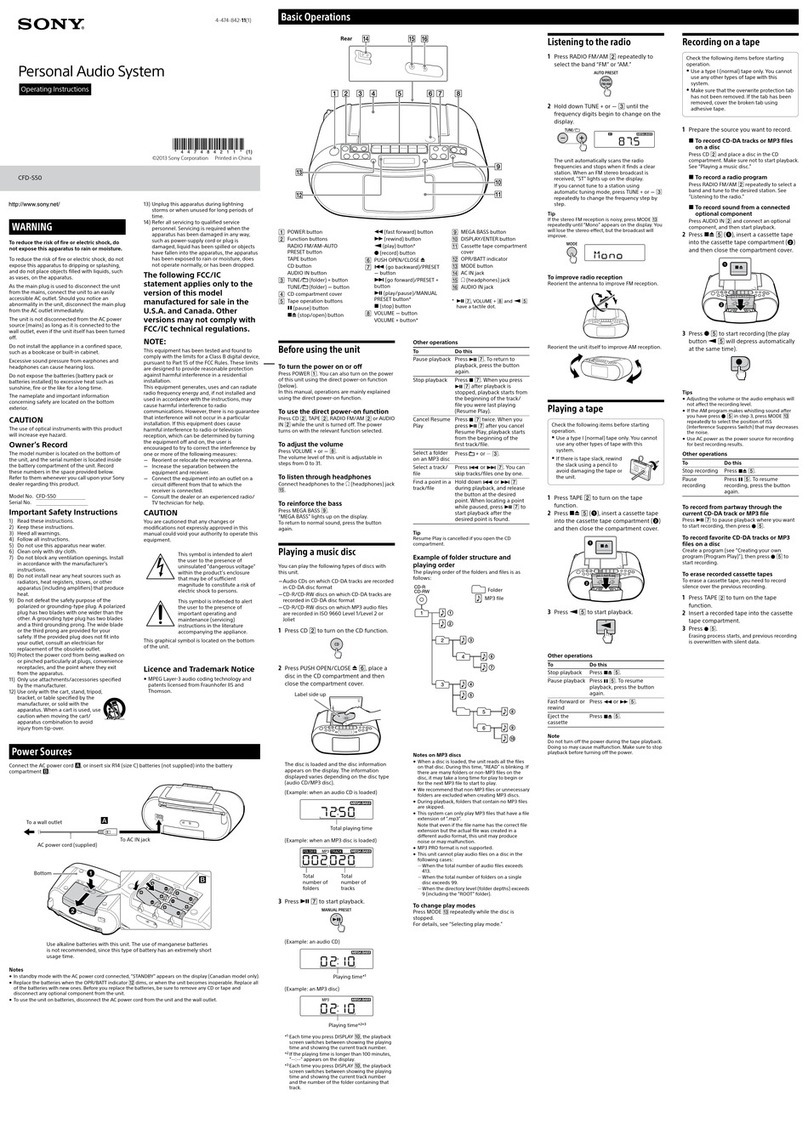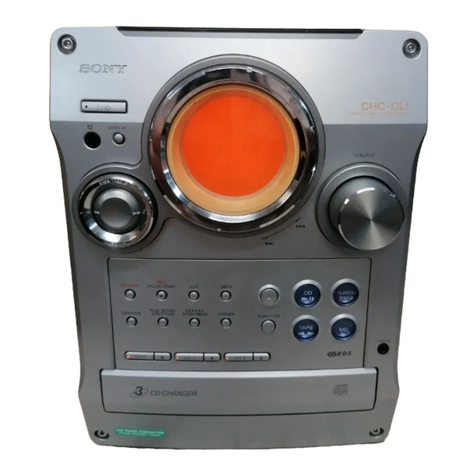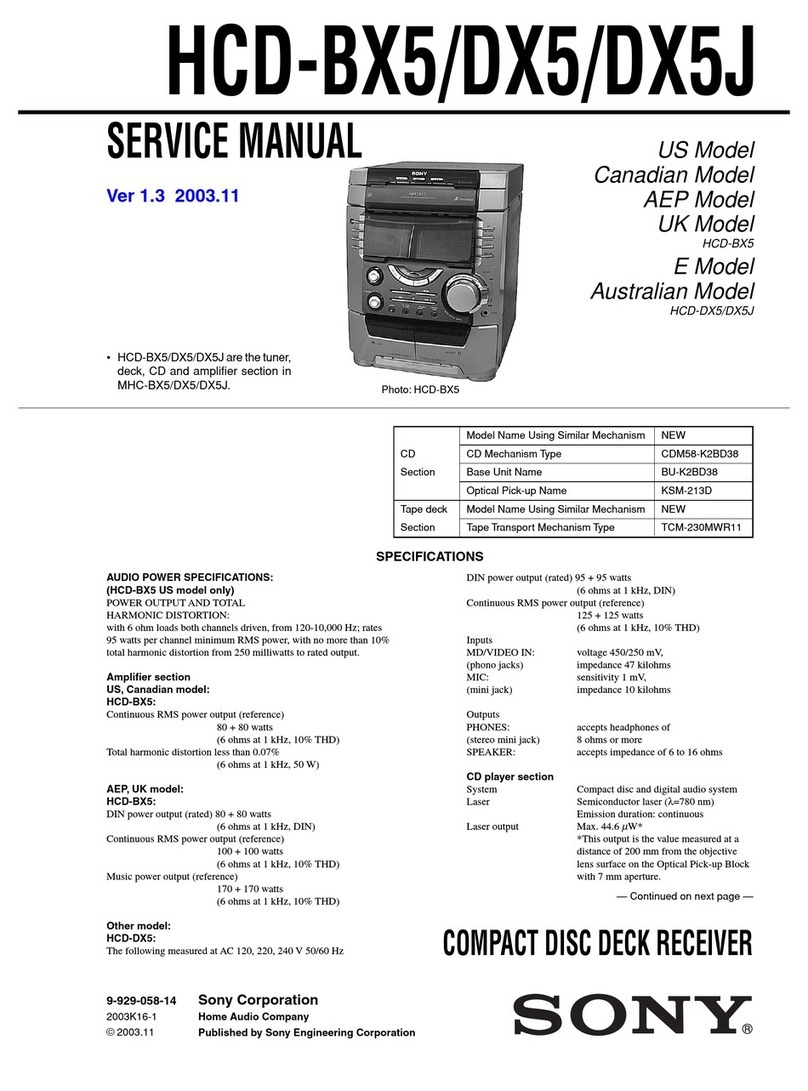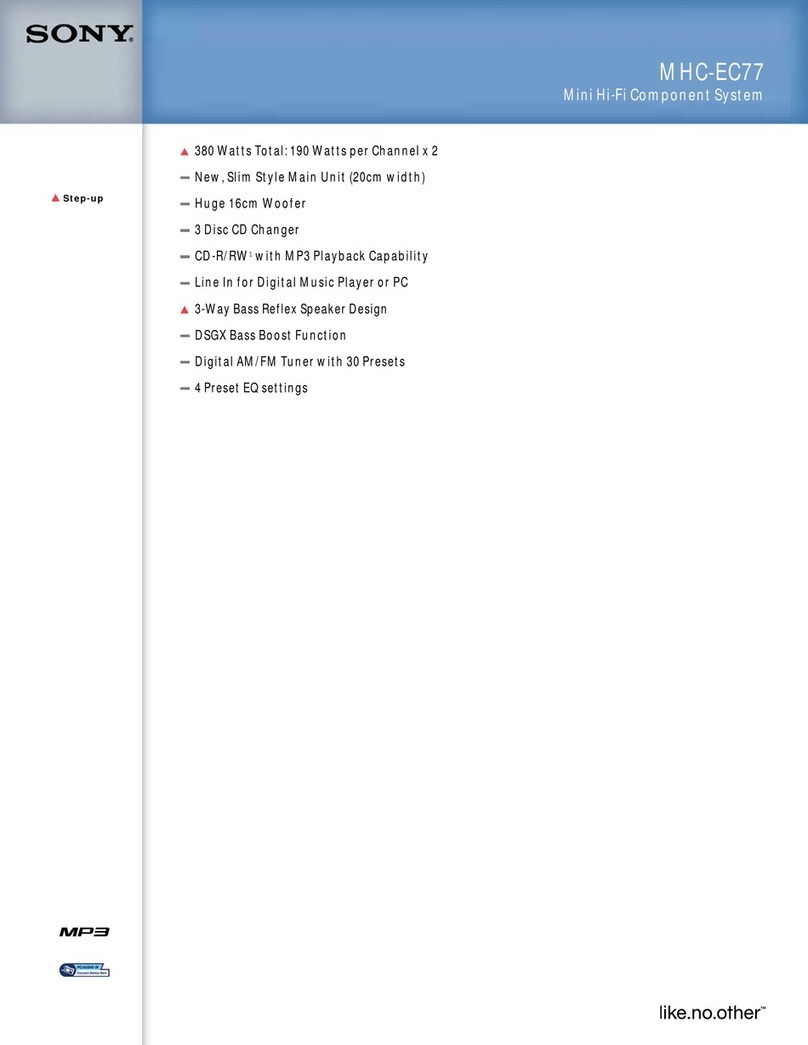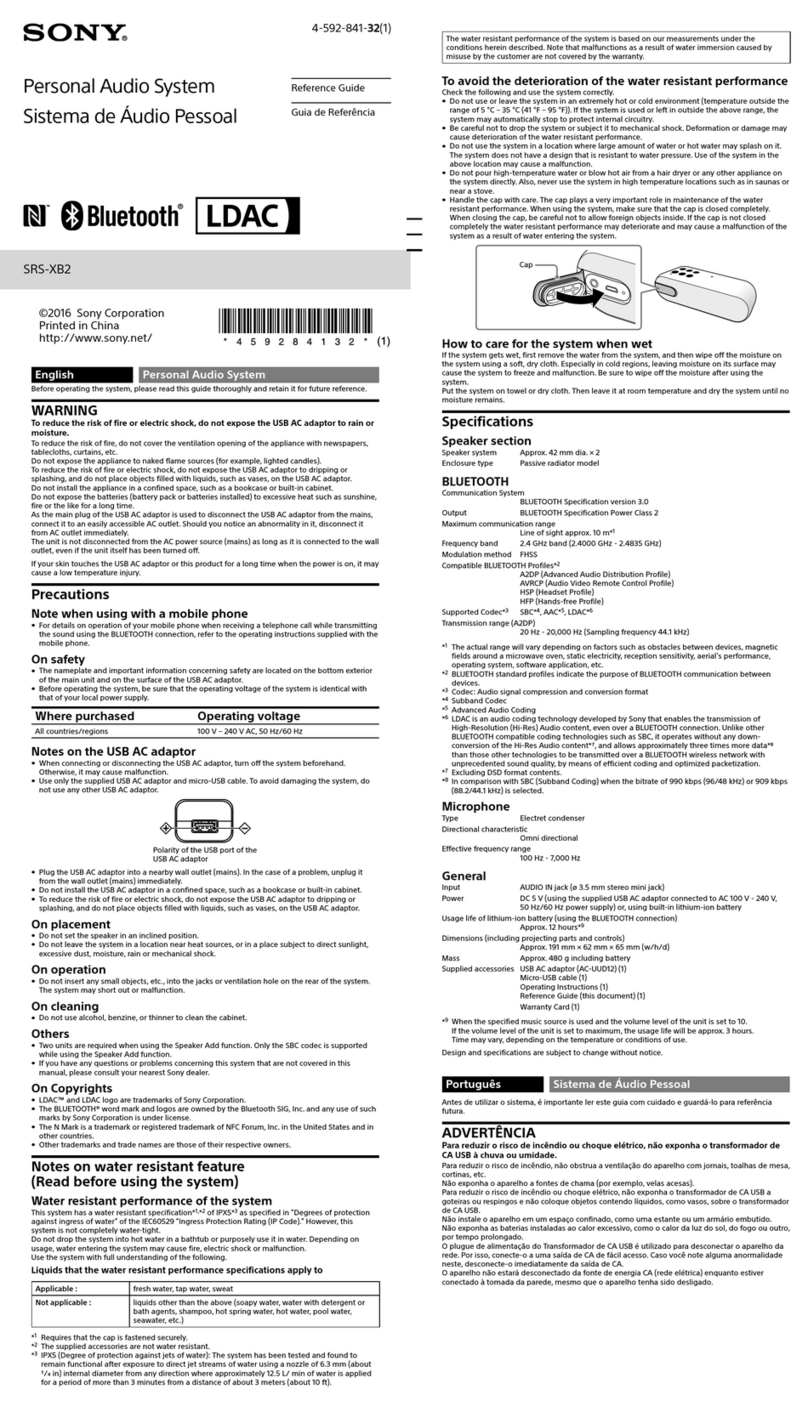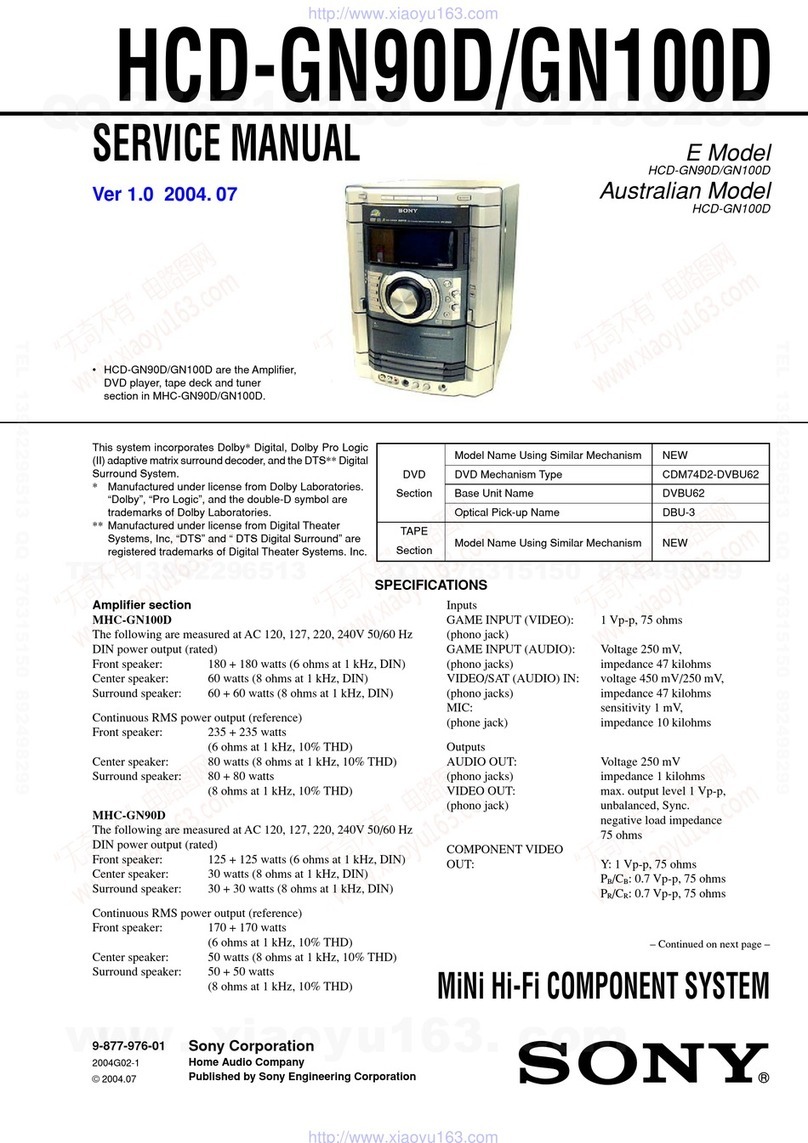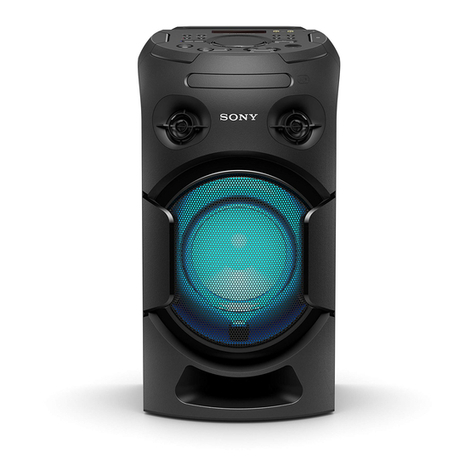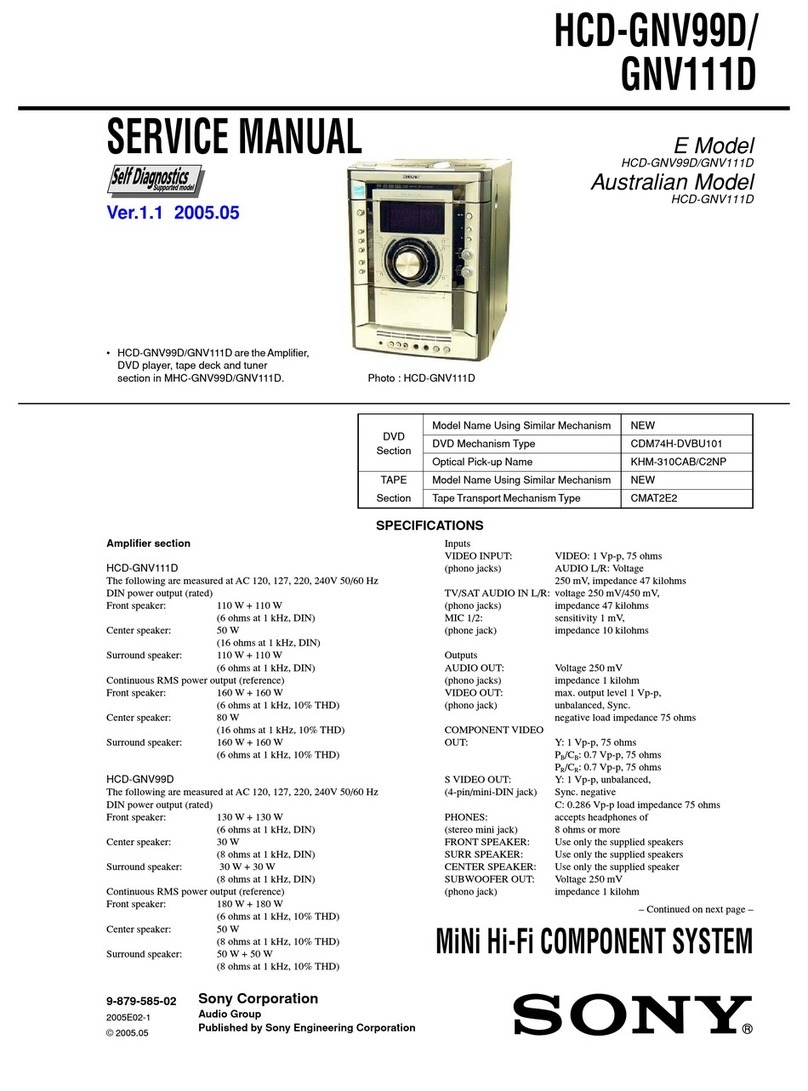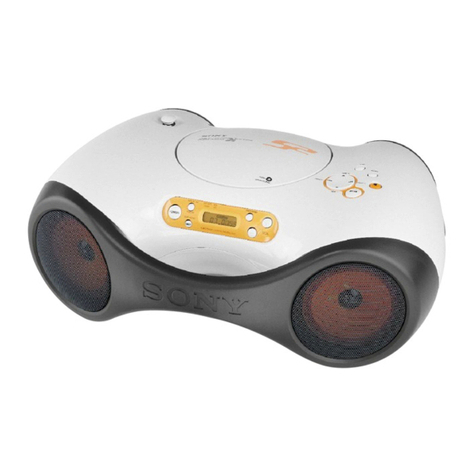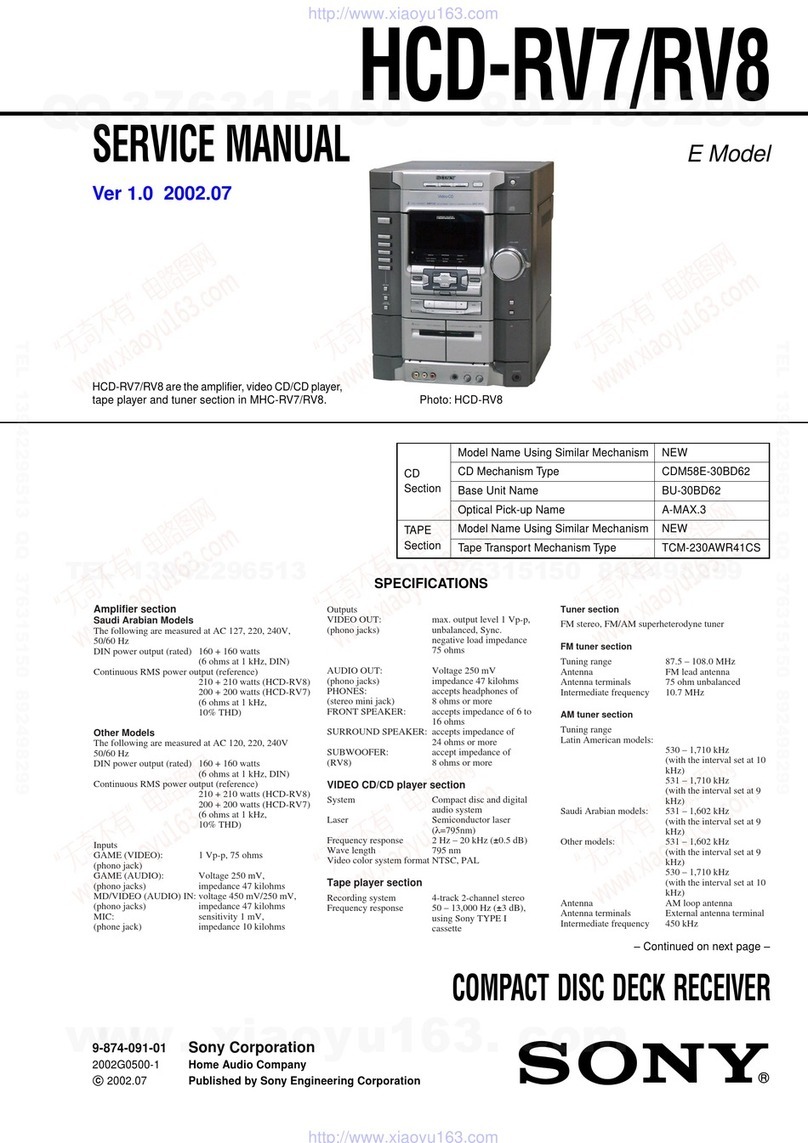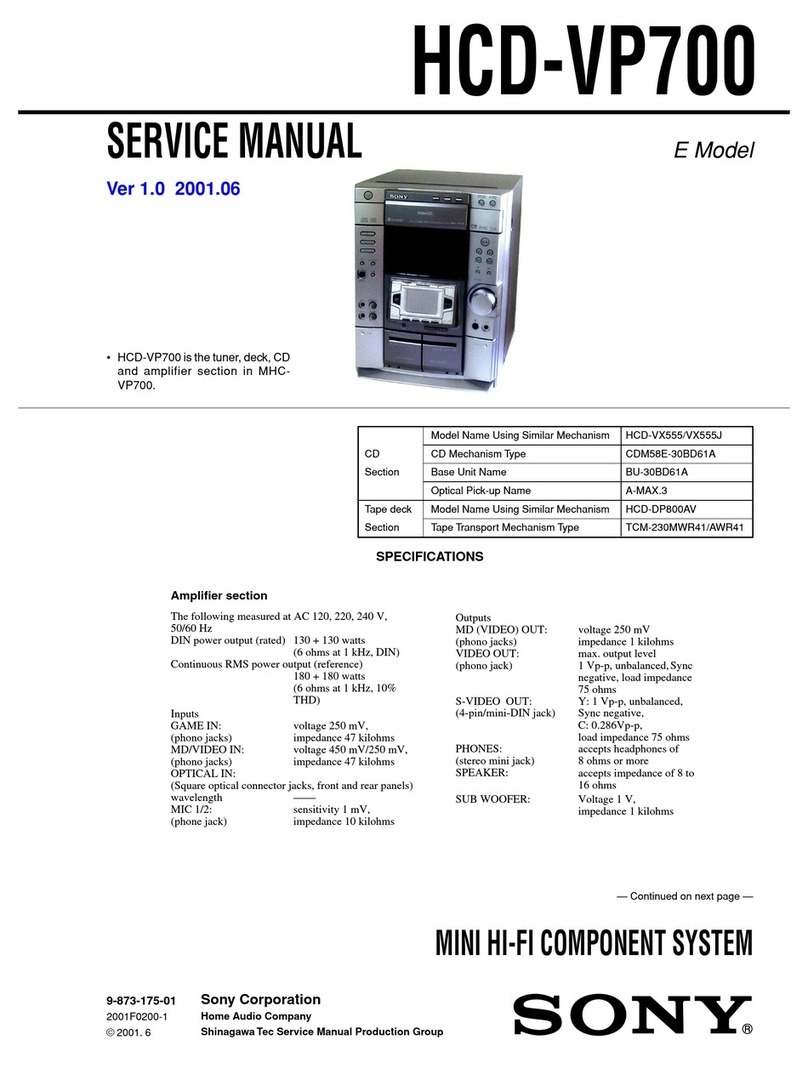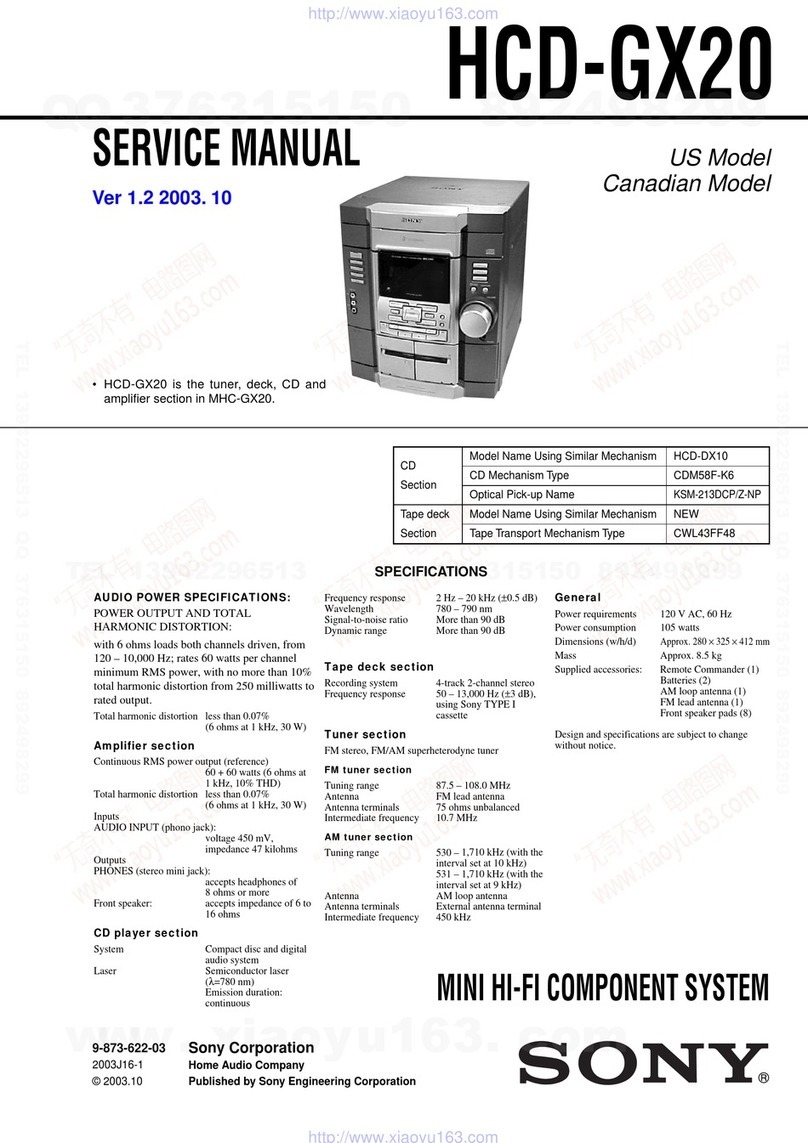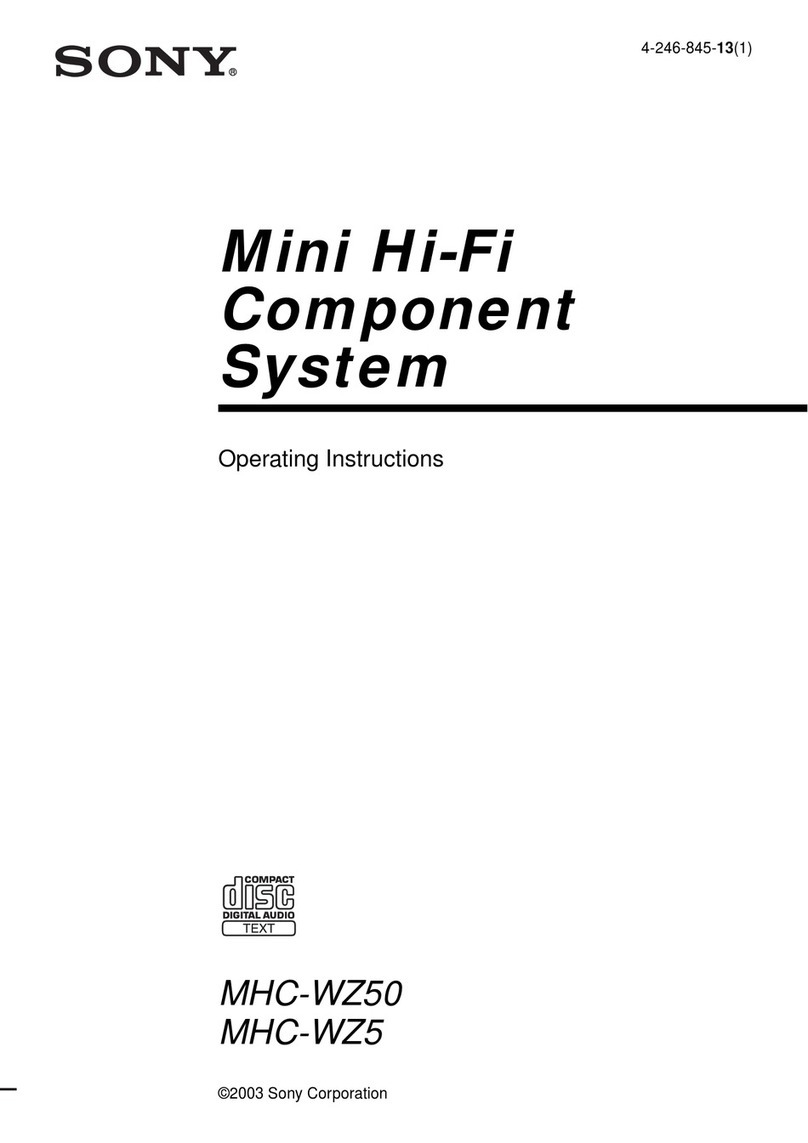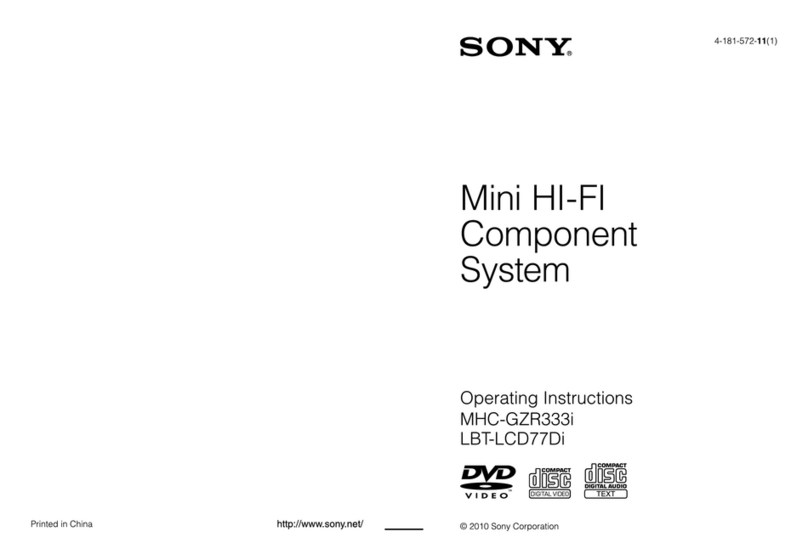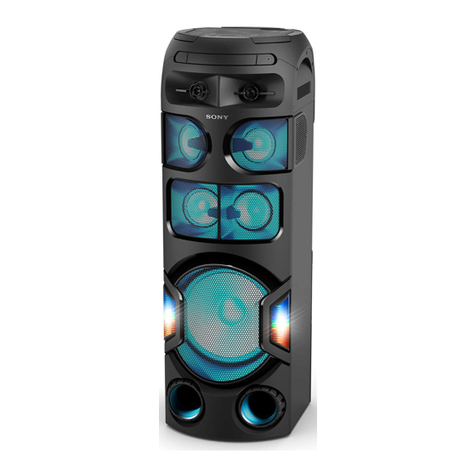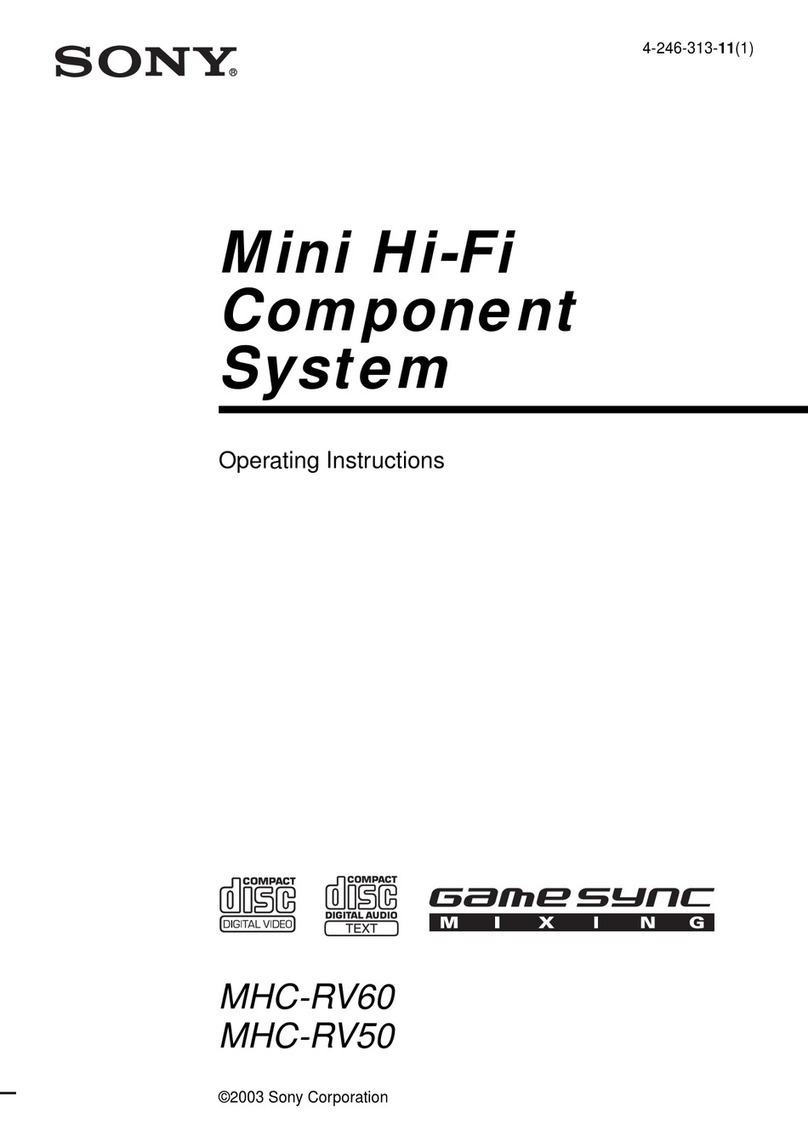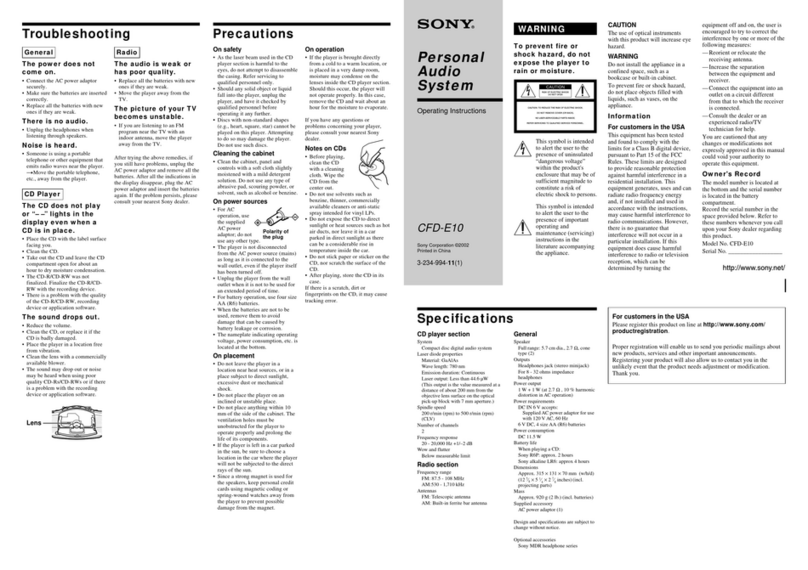4
8. EXPLODEDVIEWS
8-1. Case and Back Panel Section .............................................. 66
8-2. Front Panel Section 1 .......................................................... 67
8-3. Front Panel Section 2 .......................................................... 68
8-4. Chassis Section ................................................................... 69
8-5. TC Mechanism Section 1 (TCM230PWR12) ..................... 70
8-6. TC Mechanism Section 2 (TCM230PWR12) ..................... 71
8-7. CD Mechanism Section (CDM37L-5BD34L) .................... 72
8-8. Base Unit Section (BU-5BD34L) ....................................... 73
9. ELECTRICAL PARTS LIST ........................................ 74
1. SERVICING NOTE .......................................................... 5
2. GENERAL ....................................................................9
3. DISASSEMBLY
3-1. Front Panel and Video Board .............................................. 11
3-2. Main Board ......................................................................... 11
3-3. Sub Panel ............................................................................ 12
3-4. CD LID Assembly .............................................................. 12
3-5. Tape Mechanism Deck and Cassette LID ........................... 12
3-6. CD Mechanism Deck .......................................................... 13
3-7. Base Unit............................................................................. 13
3-8. Disc Table ........................................................................... 13
4.TEST MODE ..............................................................14
5. MECHANICAL ADJUSTMENTS ..........................15
6. ELECTRICAL ADJUSTMENTS ............................... 15
7. DIAGRAMS
7-1. Circuit Boards Location ...................................................... 19
7-2. Block Diagrams
•BD Section ....................................................................... 20
•Deck Section .................................................................... 21
•Main (1/2) Section ........................................................... 22
•Main (2/2) Section ........................................................... 23
•Video Section ................................................................... 24
•Power Section .................................................................. 25
•Display Section ................................................................ 26
7-3. Printed Wiring Board –BD Section –................................. 28
7-4. Schematic Diagram –BD Section –................................... 29
7-5. Schematic Diagram –Deck Section –................................. 30
7-6. Printed Wiring Board –Deck Section –.............................. 31
7-7. Printed Wiring Board –Video Section –............................. 32
7-8. Schematic Diagram –Video (1/3) Section –....................... 33
7-9. Schematic Diagram –Video (2/3) Section –....................... 34
7-10. Schematic Diagram –Video (3/3) Section –..................... 35
7-11. Printed Wiring Board –Main Section –............................ 36
7-12. Schematic Diagram –Main (1/3) Section –...................... 37
7-13. Schematic Diagram –Main (2/3) Section –...................... 38
7-14. Schematic Diagram –Main (3/3) Section –...................... 39
7-15. Printed Wiring Board –Power Section –......................... 40
7-16. Schematic Diagram –Power Section –............................ 41
7-17. Printed Wiring Board –Panel FL Section –..................... 42
7-18. Schematic Diagram –Panel FL Section –........................ 43
7-19. Printed Wiring Board –Panel VR Section –.................... 44
7-20. Schematic Diagram –Panel VR Section –....................... 45
7-21. Printed Wiring Board –TC Panel Section –..................... 46
7-22. Schematic Diagram –TC Panel Section –....................... 47
7-23. Printed Wiring Board –CD Panel Section –.................... 48
7-24. Schematic Diagram –CD Panel Section –....................... 49
7-25. Printed Wiring Board –CD Motor Section –................... 50
7-26. Schematic Diagram –CD Motor Section –...................... 51
7-27. Schematic Diagram –Trans Section –............................. 52
7-28. Printed Wiring Board –Trans Section –........................... 53
7-29. Schematic Diagram –Leaf SW Section –........................ 53
7-30. Printed Wiring Board –Leaf SW Section –..................... 53
7-31. IC Block Diagrams ........................................................... 54
7-32. IC Pin Functions ............................................................... 56
TABLE OF CONTENTS

